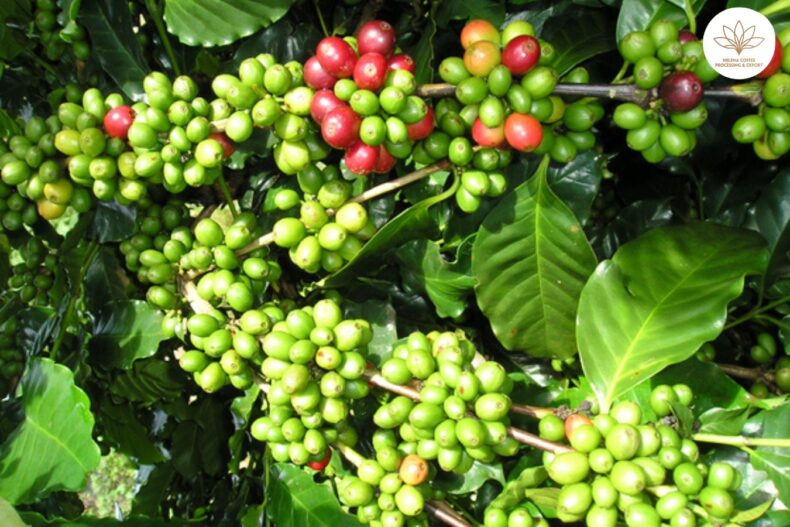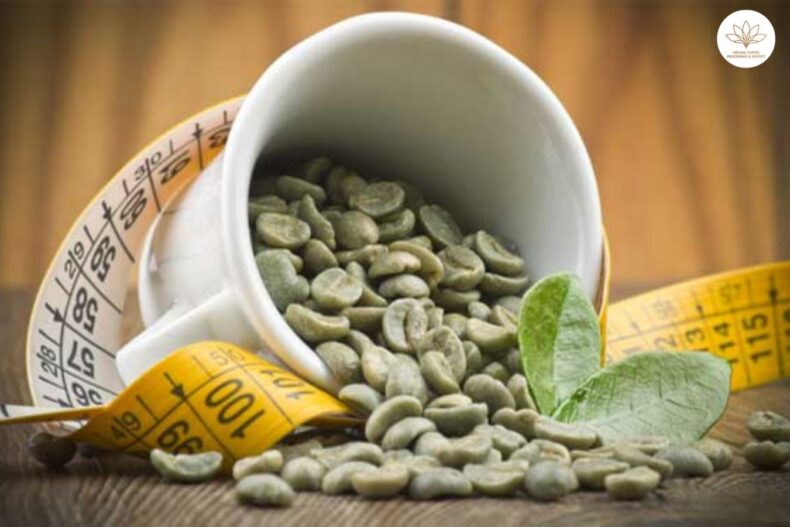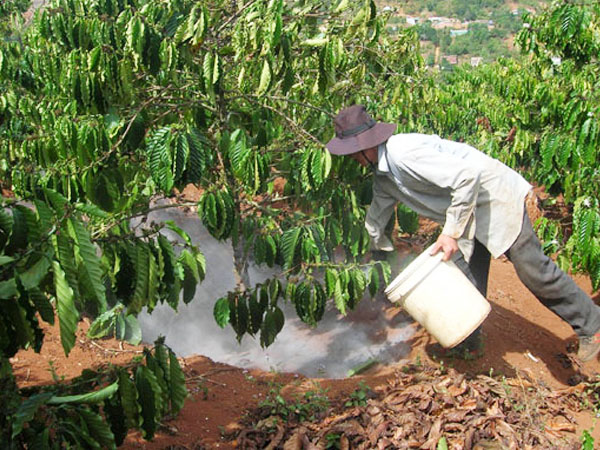
How does coffee flower simultaneously? In coffee production, the application of new scientific and technical advances such as fertilization, watering, shaping, pest control, etc., have all had an impact on helping coffee trees grow, develop, and increase yield.
To help coffee trees after harvest has the vitality to prepare to flower and bear fruit next season, people need to pay attention to some techniques to help coffee trees flower simultaneously, such as:
Pruning: For coffee that does not have flowers at the locations where the fruit was produced last year, the old branches should be pruned so that the tree can grow new additions; these new branches will flower next year of the same variety.
Coffee and tea will flower the previous year gave fruit. It is necessary to prune off branches that grow in the shady canopy that cannot receive sunlight. The components on the top of the roof, the units that are too small around the central axis of the tree, also need to be pruned so that the sunlight is evenly distributed on the branches for the plant to flower stably over the years.
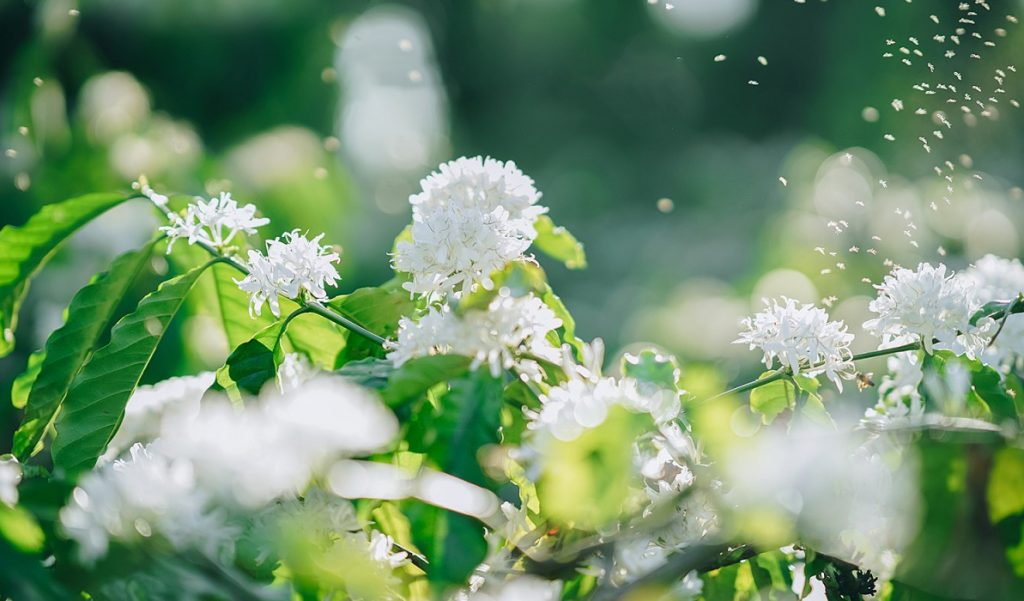
Pruning after harvest also helps coffee concentrate nutrients to differentiate flower buds and flower well, pruning carefully with sharp scissors, not to scratch, bruise, or die. Determine the appropriate felling location to get a reasonably balanced canopy, concentrating nutrients for high yield.
Watering: There are decisive properties to help coffee plants flower, concentrate and increase the rate of fruit set, so it is necessary to determine the appropriate watering time based on the following factors:
Soil type: Soil is irrigated later than sandy soil; the soil is mixed with gravel.
When the rainy season ends: If the rainy season ends early, watering should be done earlier, usually 2-3 months after the end of the rainy season, to water the plants.
After harvesting, the essential pruning work has been completed when the soil is dry; the coffee leaves show wilting, the flower buds have differentiated as big as a grain of rice and are evenly distributed over the areas.
Burning branches, watering enough moisture for plants to create favorable conditions for plants to flower simultaneously. For coffee plants, it takes a “squeezing” time lasting about 1.5-2 months depending on soil conditions, temperature, nutrition of the tree, etc.; when the flower sprouts turn white and over a kilometer number of flower sprouts mature. About 65-70%.
The time of first watering is based on the morphology of flowers and plants: The flowers have differentiated to the outermost nodes of the branches, the flower buds are 1-1.5 cm long, ivory white; Plants with temporary wilting symptoms, drooping leaves during the day are the most suitable time to water.

At this stage, the flowers often bloom indiscriminately due to insufficient flower sprouts. Still, if the farmers have watered or rained, the phenomenon of early bloom will occur, flowers bloom unevenly, and this is the cause of coffee fruit set. Ripening is not concentrated, harvesting is laborious, reducing coffee yield.
After the flowering period, coffee plants need a large amount of water to stimulate flowering. This is when coffee plants have the highest water demand and determine the output and quality of coffee.
At this stage, if it drizzles or water is not enough, the plants will not flower all (also known as flowering lemons), leading to inability to pollinate, not set fruit, reduce yield and quality of coffee.
Therefore, if it rains during this time, but the amount of water is not enough, people must water to replenish the flowers in time.
– Amount of watering: First time 360 liters/root, the following times: 160-180 liters/root.
– Irrigation cycle: First time: 20 days, the following times: 10 days.
– Time of watering: When the plant has fully differentiated flower buds. After the second watering, it helps the remaining flowers bloom and helps the pollination process of coffee flowers to be favorable, increase the number of fruits and increase coffee yield thanks to the second watering.
Fertilizing: When watering for the first time in combination with fertilizer, if drip irrigation, dissolve the fertilizer according to the irrigation system. In the dry season, the amount of water for coffee is limited, so it is best to use a fast-dissolving fertilizer with high nitrogen, phosphorus, and low potassium ratio. In addition, before watering, it is necessary to add foliar fertilizers with high phosphorus, boron, and micronutrient content to support flower sprout differentiation, increase pollen vigor, increase fruit set rate, and prevent fruit drop.
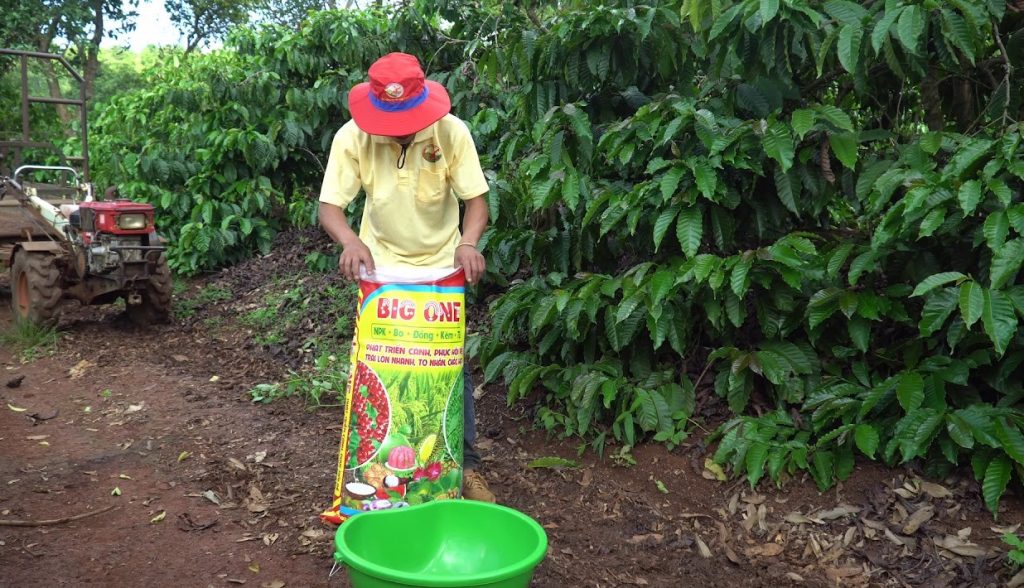
According to the research results of the Central Highlands Agro-Forestry Science and Technology Institute, depending on the type of soil, the use of N, P, K fertilizers in combination with microelements makes coffee yield increase. The amount of fertilizer N, P, K increased when combined with micronutrients.
Adding zinc increased yield by 18.9% compared with no zinc application; Adding Bo increased output by 11.4%. Basalt red-brown soil fertilized with zinc increased yield by 19.2% compared with no fertilizer; Adding sulfur increases the efficiency by 9.7%.
In addition, coffee gardens often have a low pH of about 4.0-4.5, making coffee soil acidic and increasing phosphorus fixation, reducing the plant’s ability to absorb phosphorus. The amount of mobile aluminum in the soil directly affects the growth of roots, especially the hairy root tips and side roots become thick, the number of hairs and branch roots are severely reduced, hindering the absorption process, shipping, copper—plant nutrients.
Acidic soil is also a favorable environment for some microorganisms and nematodes to destroy the root area, causing root swelling and root rot, which reduces the ability of the roots to absorb nutrients. Therefore, everyone should note that once every two years, people should add powdered lime or dolomite lime to improve the soil and limit some fungal diseases in the soil that damage the roots of coffee trees, the amount of lime applied. The average for each tree is about 0.5 Kg.
In addition, if a diseased coffee tree is detected, it should be sprayed with insecticides in time, should spray the area to prevent diseased trees, should not spread the whole garden, affecting the coffee garden ecosystem and the coffee garden. Destroy beneficial natural enemies, waste, waste labor, and pollute the environment.
>>> How to make coffee flowers simultaneously?
